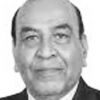Syed Ata Hasnain | The Ukraine war and the prospects in the making

By the end of August 2022 six months had elapsed without any decisive signals of victory or defeat on the battlefield in the ongoing Russia-Ukraine war. There was nothing unusual about this.
Wars fought with original resources many times come to a standstill especially if the forces are broadly matching and there are no outstanding manoeuvres which place one side at an operational or strategic advantage against the other.
There is no doubt that the war was extending and this was against all the expectations of Nato and the European Union nations which were living in fear of the approaching winter without adequate alternatives worked out towards crucial energy management for the challenging period.
Russia was already cutting back its energy supplies to Europe and the anticipated collapse of its economy had not taken place despite severe Western sanctions. The economic impact of the Covid-19 pandemic was, however, being worsened by the energy crisis which was fast converting to a worldwide economic crisis, leading to collapse of frail economies like Sri Lanka and Pakistan.
The Shanghai Cooperation Organisation (SCO), which was due to meet in early September 2022, didn’t appear to offer any hope regarding the war in Ukraine, despite the presence of Russia and China. It was a situation demanding a fresh initiative to spur things on from the level of inactivity to which they had sunk.
The question was: who would take this initiative? Eastern Ukraine in the Donbass area was under Russian siege. With the demographics against them, President Volodymyr Zelenskyy’s forces couldn’t hope to make much headway. The Black Sea coastline had also been largely wrested from Ukraine and the latter’s operations through that direction would obviously be tedious, costly in time and resources.
Fearful of a long war which could well see the end of Nato’s unity and its current energetic commitment, it appears the alliance led by the United States focused on gathering and assessing intelligence in the north and triggered a series of Ukrainian offensive operations that have been termed counter-offensives.
The announcement in the Western media and the information coming from important European capitals at the end of August 2022 that Ukraine’s armed forces had resorted to successful counter-offensives was hyped and built with focus on the Kyiv, Kharkiv and Kherson areas, all high-profile landmarks. None of this has been closely examined by military experts in India and the Western information has simply been lapped up and projected as impending victories and collapse of the Russian front; reportedly 2,000 sq miles of territory has been captured/recaptured. Surprisingly, there are very few other analysts who look at the military operational angle of the war.
The aim of the West is to project an impending collapse of Russia’s military capability and thus sap its will to fight, while instigating revolts against President Vladimir Putin’s government. On the energy side, efforts are afoot to place obstacles in the way for the movement of Russian energy resources to willing buyers through pressure on insurance and shipping companies.
This combined strategy is what Nato hopes will succeed. It has of course received a sudden surprise in the form of the perceived cooling by both India and China towards Russia and the advice given by both nations on the need for an immediate end to the war for the sake of the international economic and energy situation.
It’s the operational hype which is the main weapon to try and bring Mr Putin to the table and end the war, now that economics doesn’t seem to be working. In actual effect, none of the operations now on are serious enough to be decisive.
It's incorrect to call them counter-offensives, which by themselves would be much larger in content and scope. The operations we are seeing are more in the nature of ripostes which are short offensive punches across fronts to hit the logistics and firm bases of the adversary, from where the Russian offensives were launched.
Yes, territory has been captured but not critical ones, and the Russians aren’t really wilting; there seems to be no pursuit and the Ukrainians are obviously not going overboard while they continue to maintain balance. Mr Putin has his own ways of information and psychological pushback; he is no babe in the woods and his recent responses to the soft Sino-Indian pressure to stop the war may actually be deceptive.
The critical thing for the moment is that Mr Putin has decided to carry on the fight.
He has reportedly ordered the mobilisation of 300,000 reservists. The quality of these soldiers is going to be highly questionable especially since the Ukrainians are returning with better orientation, training and confidence. Yet, the Western propaganda claiming 80,000 to 90,000 Russian troops having died in action bears little credibility.
The response within Russia would have been far more negative had such casualties occurred in a population which is reducing year on year. However, Mr Putin’s actions also display desperation. The quality of operational capability of his forces has been highly questionable, right from day one.
Except for the delivery of huge quantities of explosives through various artilleries, the power of closing in and making decisive manoeuvres to capture and hold territory has nowhere been on display. Thus, with additional poorly trained troops, Mr Putin is only getting deeper into the trap and that is dangerous in the current situation.
The Russians have deliberately conducted operations around nuclear power plants to give hints of their willingness to take this war into the realm of limited nuclear domain.
Nato’s nuclear doctrine will be under test. Equally, Mr Putin will be under pressure both externally and internally. There are yet no firm indicators on the buildup of organised negative sentiment against Mr Putin; small protests against airlines denying seats to males are no real parameters to judge with.

